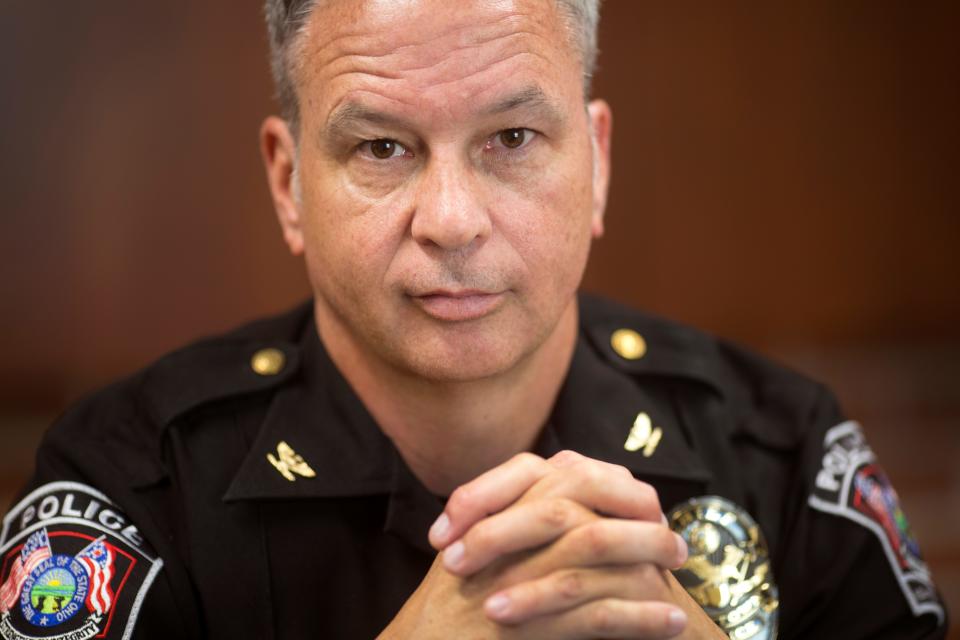Opinion: Fentanyl has changed the way we view, deal with addiction
When fentanyl became a staple in the drug supply in 2016, Carfentanil appeared in Cincinnati and Hamilton County, and we no choice but to change our approach to addiction. Overdose rates doubled from an average of 10-25 a week with the organic opiate of heroin to 50-70 a week with the introduction of synthetic opiates. The latter numbers have become the new normal, even after stablilizing the rates.
As illicit fentanyl spreads across the United States, we will have no choice but to recognize that it can touch any of us, devastating individuals, families and communities. We can no longer think of this as a problem that only impacts "them," otherwise known as the opiate user, heroin user or "addict."
Many in our community, myself included, have been sounding the alarm for years about illicit fentanyl being pressed into fake prescription pills. However, the message hasn't resonated until now when we see more younger people overdose, and some even lose their life to it, never expecting to find fentanyl in a Xanax, Oxycodone, Adderall or any other pill.
Its potential market reach is not just to the street corner, "addict" or heroin user. These pills could find their way to a high school student, college kid or anyone with access to the internet, social media or a friend who simply doesn’t know what’s really in it when they give it to them.
Illicit fentanyl is not like any other drug. While the focus should be on assisting drug addiction overall and cracking down on all drugs, illicit fentanyl must be treated with the same urgency and immediacy as its deadly consequences. Never has a drug had the ability to immediately cause overdose and death, especially on such a large scale. Eliminating it should be a community and national priority.
While any illicit drug can be deadly, synthetic opiates such as fentanyl make up the majority of overdose deaths in the U.S. They are contributing to the rise of deaths in cocaine, methamphetamine and other opioids. Now with illicit fentanyl show up in fake prescription pills, it will continue adding to the dramatic rise in American overdose deaths. Even without fentanyl, we would still be battling addiction and overdose deaths, but not at the annual levels - tens of thousands of people - we've seen in recent years.
To defeat this demon, we must change the way we view and deal with addiction. We must change the way we talk about people who suffer from addiction and stop stigmatizing them. The word "addict" when applied discounts the mental health, trauma, childhood experiences and genetics that are contributing factors to someone's decision to use drugs. Instead, we have to recognize this as a substance abuse disorder that impacts a person mentally and physically like many other chronic conditions and should be treated as such.
Now anyone, even those without a substance abuse disorder, can become a victim of fentanyl just by unwittingly taking one of these fake pills for a little extra energy, to stay awake a little longer, to ease pain or just calm the nerves.
It won’t matter if fentanyl or the synthetic opiate is 10,100 or 10,000 times more potent than the previous version because it won’t be the opiate-heroin user or addict. It will be someone just like us who only needed to use that pill one time.
I am saddened by decades of outdated drug policy and stigma impacting race, culture, poverty and negatively define a group of people whether their "fault" or not that use illicit drugs. Change often only comes after the number of people reaches a level it cannot be ignored, excused or judged away. Fentanyl will change our definition of "us" and "them."
For some in law enforcement, fentanyl has forced us to change. Recognizing how overwhelming the overdoses and deaths can be, realizing that arresting those using illicit drugs has not worked, we have adopted the ideology of harm reduction. This must be one of the first steps in a Continuum of Care model. We are partnering with public health with an understanding that in order to have an opportunity to reach recovery through treatment, a person has to first recover from the overdose.
Instead of threatening jail, we should choose to inform anyone using any illicit drug to never use alone, have Naloxone (Narcan), use fentanyl test strips and call 911.
What seems to be such a radical shift in philosophy for policing, isn’t as radical as the amount of mothers, fathers, brothers, sisters, sons or daughters lost to an overdose. And the families who are left behind don't grieve an "addict," they grieve a loved one.
The strain and devastation from this loss of life has forced us back to the fundamentals of our first responder roots – saving lives is always the priority, even if that means we must shift our thinking to include a harm reduction message.
This just shouldn’t be a shift in philosophy for law enforcement though. We all must adjust and begin to view addiction differently and treat fentanyl like the emergency it is. Stigma, ignorance or a lack of compassion for those with substance abuse disorder won't change the outcome. Let's make the decision to change today before we are left with no other choice.
Newtown Police Chief Tom Synan is a member of Hamilton County Heroin Coalition.

This article originally appeared on Cincinnati Enquirer: Opinion: Fentanyl has changed the way we view, deal with addiction

